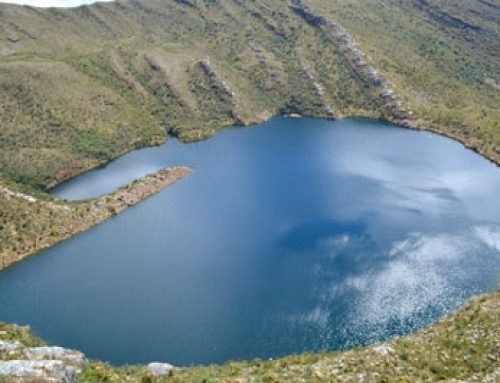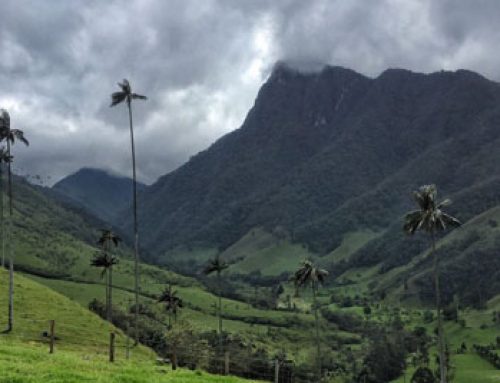There is no doubt that the Sumapaz Moorland is one of the most important in the world because it is the largest moorland in the world in which there are hundreds of frailejones, the plants responsible for making and storing the water that will supply much of the city.

Chisacá Lagoon – Sumapaz National Park. Imagen by: sitiosturisticoscolombia.com
How to get to Sumapaz Paramo?
Sumapaz National Natural Park is located in Sumapaz, Bogota, very close to Usme. The easiest way is to use the Transmilenio service up to the Usme portal and then take the feeder bus route “Usme Centro”, get off at the Usme Mayor’s office and there you can take a bus to Chisacá, from there you will have to walk for about two hours until you reach the entrance to the Park.
Being the largest moorland in the world there are several places to visit and to get to San Juan de Sumapaz, located two hours from Sumapaz National Park, you must take the Marichuela feeder bus route at the Usme portal and get off at the sixth stop, where you will find buses of the Cootransfusa company that provide transportation service to San Juan de Sumapaz, remember that there is only one bus a day at 6:00 am.
Weather and recommendations in the Sumapaz Paramo
In the Páramo de Sumapaz you will find different thermal floors, for this reason, you will experience temperatures from 2°C to 30°C, it is recommended to wear warm clothes, waterproof jacket and comfortable shoes with a good grip for the walk. Have sunscreen and an extra set of clothes in case the rain surprises you.
A guide is required to travel through the park, as the park is so large (154,000 hectares) that you could get lost or enter in dangerous or forbidden areas.
You should keep in mind that there is no infrastructure in the park, that is, you will not find restaurants or hotels, so it is necessary that you have your own food, plenty of hydration and food with high caloric content.
If you want to visit other places within the town of Sumapaz, you can stock up on food produced by peasants of the paramo, one option is the path Auras (on the map is located as the Jaime Garzon College) or San Juan de Sumapaz.

Image by: Sitiosturisticoscolombia.com
Ecotourism in the Sumapaz Paramo
The most important thing during your visit to the world’s largest wasteland is to become aware so as to make others aware of the environmental problems facing the planet and the importance that ecosystems of this type have for the planet.

The Sumapaz Paramo is home to several species of fauna and flora. During your visit to this important tourist destination, at least 200 species of mammals are reported, including moor tapirs, curies, chigüiros, white deer, pumas and ocelots. In addition, different species of reptiles and birds, so you can practice bird watching. You will also get to know flora such as the pajonales and frailejones.

In Sumapaz Paramo many water sources are born, among them lagoons, rivers such as the Tunjos lagoon, Laguna Larga, Laguna Cajitas, Laguna Alar Pasquilla and Laguna Negra.
Visiting the Sumapaz moor is a wonderful experience that must be primarily educational, it is said that these lands were protected by indigenous communities that catalogued this area as sacred. At the time of the Spanish conquest, this place was discovered by the colonists who were looking for the mythical treasure of El Dorado. Very close to the Sumapaz moor was found what is known as the Golden Raft of the Legend of El Dorado that is exhibited in the Gold Museum in Bogota.
Being a place with so much environmental potential, tourists are asked to hire a certified guide service that really works with ecotourism. Be very respectful of the park’s water sources, fauna and flora; it is a delicate ecosystem that has been negatively impacted by the presence of unscrupulous tourists who damage this natural wonder.
The part of the moor that corresponds to the town of Sumapaz, Bogota, is divided into four villages, which are inhabited by peasants in the area of which some are making inroads into tourism, so you can find some tourist inns. One of them is located in the village Auras, where you can enjoy a peasant lunch and delicious dairy products. Another point worth visiting is San Juan de Sumapaz.

Wonderful lanscape in Auras, Sumapaz.
As a curious fact we can say that many years ago, this place was the center of the armed conflict, the guerrilla appropriated this land, therefore, there were multiple clashes with the army, until the army managed to take control in the closest areas of Usme, then the complex of lakes Tunjos became the Sumapaz National Natural Park.

Camping in the Sumapaz Paramo
Within Sumapaz National Nature Park you will not be able to camp, however local farmers may let you camp on their farms. In the trail Auras you will find some farms that are already venturing into tourism and already have adequate spaces for camping. Another option is to camp in Usme, which is just two hours from the Paramo. The town of Usme has developed a little more tourism so it will be easier to find accommodation, one of the options are the Chiguaza Reserve (311 211 4579) or Granja Sol Naciente (www.granjasolnaciente.com.co).





